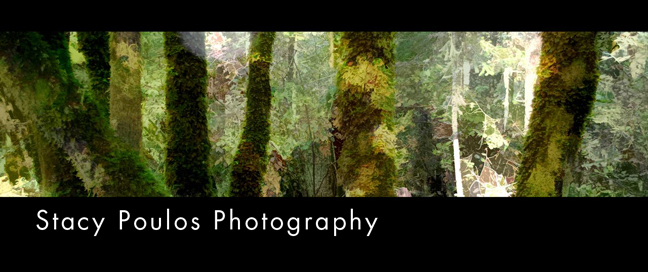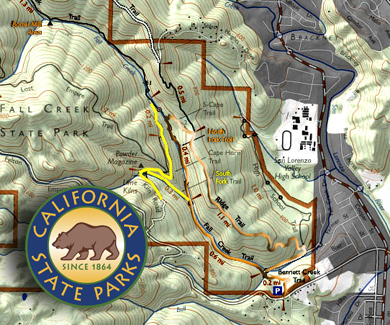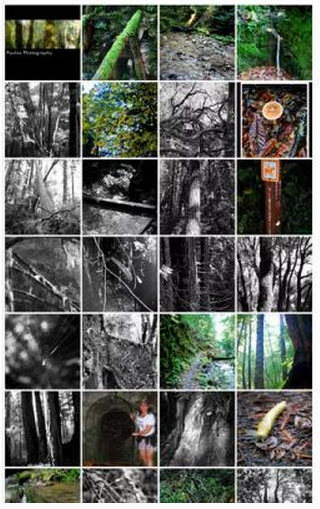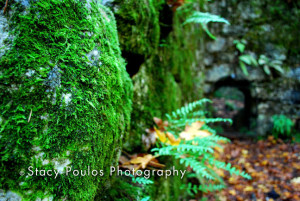
Indiana Jones; Temple of Fall Creek Trail. California State Park, Felton, CA
By Stacy Poulos Postcard Travelers a Playback.net Production
180 photos of Fall Creek by Stacy Poulos on Facebook: https://goo.gl/
Video: https://www.facebook.com/photo.php?v=524435057581725

Not so deep in the woods of ‘Scotts Valley’ is a lush forest of Mossy trees in Felton, California. The broken ones that lay across the ‘Fall Creek’ of Henry Cowell Redwoods State Park trail and forest floor are as full of moss, as the ones standing tall gasping for sunlight. We took a short hike about 3 miles round trip the day after Thanksgiving to work off the trimmings.

I can only equate my experience to the lush forests as the forest on the Hilo side of the big island of Hawaii; Lush. I learned one time in a movie you can tell which way was ‘North’ since the north side doesn’t get as much direct sunlight (If it gets any at all). Of course this is scientifically confirmed (not) with wiki answers. I suppose it depends where you live. “In northern latitudes, the north side of trees and rocks will generally have more moss on average than other sides (though south-side outcroppings are not unknown). This is assumed to be because of the lack of sufficient water for reproduction on the sun-facing side of trees. South of the equator the reverse is true. In deep forests where sunlight does not penetrate, mosses grow equally well on all sides of the tree trunk” -IndianaHoosier / yahoo answers. Unless your in the middle of ‘Fall Creek’ where the sun can only peak through for short moments to some spots of the valley floor, there’s no way of telling which way is north, because moss grows every where, all sides. All kinds of moss and fungi. Until you get your blood flowing from your hike, you are going to be chilly, chilly as the damp, cold and dark environment it takes to grow moss.

I was with my cousins, my youngest cousin 13 years old taking photos, as I was; at the Intricate details from banana slugs that stood out like a sore thumb in the dark fall colors, to the contrasting images of various mushrooms and fungi and yellow fall leaves. In fact if you’re a science teacher and want to take kids on a nature walk to point out different fungi as a challenge this is a great spot. I don’t know much about fungi accept to avoid it. But I had seen more than a hand full of different types. The valley floor is sound deadening, quite and peaceful. If you settle down enough to listen, your own voice sounds different to yourself, you can hear crackling of wood from settling trees, creek beds trickling, and water drippings, distant visitors approaching. Once in a while you may hear a wrestling in the trees; hopefully not the native bob cats.
I don’t have a lot of experience hiking but the worst hike I went on was when I went 7 miles; a great deal of the hike in the heat of 90 degree weather 75 percent of the time in direct sun. We internally begged to get to the next little oases of shade to gather our strength to carry on. I can see having the ability to hike twice as long here because you are covered by trees. I think that’s the trick. Water and shade! I can’t imagine this would be a tough hike in 90 degree weather being so close to the Pacific ocean and out of the sun.
A mile and a half into our trip we were rewarded with a scene that resembled something out of a Indiana Jones movie; abandon limekilns from the 1870s decaying into the mossy forest. Slightly camouflaged with blankets of live and dead leaves, canopies of moss, rivers of dirt covering what was once tracks of wood beams for a tramway that carried tons of lime from ‘Blue-Cliff’ a 150 foot high quarry to the kilns.
Henry Cowell was from Massachusetts when he was enticed by the lure of the gold rush in California. This rush infused a high demand for construction, eventually he found his riches in the

building materials key ingredient –limestone. The key ingredient used to make mortar for brick buildings. Limestone itself is formed from a bed of sea shells layered and changed from heat and pressure from millions of years ago. More evidence of a even greater History.
Here in lies the lime kilns 1.5 miles into the forest from Felton Empire Road; the graveyard or headstones to an era in California’s History. Lime kiln’s are used to produce quicklime through the calcination of limestone (calcium carbonate). The chemical reaction takes place at 900°C to 1,000°C+. Burning 24 hours a day for 3-4 days. Hard to believe in this cool, thick forest was a thriving / bustling factory that made Codwell the richest man in Santa Cruz at one time, as well as the mortar that held parts of California’s buildings together, still today. A grave site of only remembrance of the road that was once the path way to deliver the lime that built California. It seams now the banana slugs are the rich ones.
I love a hike that has a appreciation for History, beauty, nature and a sense for adventure. As my cousins move on through the forest trail and I take photographs of all the intricate details, I think how blessed I was to have been gifted with this kind in attention to details, so many details. As I wonder, and I wonder. Looking for what is disguised or swallowed by nature. Shortly up the road I finally under stand what ‘Powder Magazine” meant on the map, as I thought it was strange to have a path named after a magazine? ‘Powder magazine’ was actually a housing for the explosives they used to break up the limestone. Like any mystery, the poorly labeled map only becomes a treasure map of what only your imagination can fly from when you are actually there discovering for yourself. For a short run it’s a great and adventurous hike. Of course you can carry on up the hill and make it a 7 mile if you want, but who knows what’s up there. Who knows what is buried underneath the discarded limestone.
The park features Redwood Grove, Douglas fir, madrone, oak and a stand of Ponderosa pine. The northern area (Fall Creek) is 2,390 acres, with about 20 miles of hiking trails. The tallest tree in the park is about 285 feet tall and about 16 feet wide. The oldest trees in the park are about 1400 to 1800 years old. Zayante Indians tribe of the Ohlone people once lived in the area, where they found shelter, water and game. (And moss).
For the details; there are no bathrooms and the trail head parking lot is hard to find so it’s best to set your milage counter before you start down Fleton Road. By Stacy Poulos
http://en.wikipedia.org/wiki/Zayante,_California
http://www.thatsmypark.org/cp-parks-beaches/henry-cowell-redwoods-sate-park/
Video: https://www.facebook.com/photo.php?v=524435057581725

